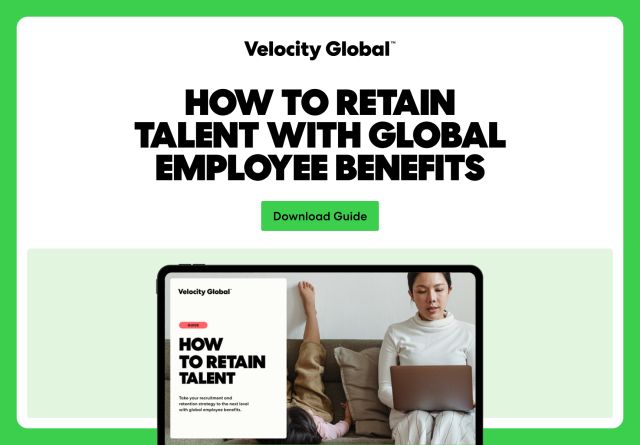Employee benefits are a crucial part of the employer-employee relationship. Attracting talent and employee retention aren’t always easy. Talent can leave your company in favor of another one based on the availability of company benefits like health insurance, paid leave, and employee assistance programs.
To better understand the big picture and give context to your company’s benefits choices, check out these 42 must-know employee benefits statistics.
Employee benefits: Key statistics
Employee benefits provide, at minimum, an added sense of safety, security, and satisfaction with a job and employer. It’s tough knowing what employees want when it comes to benefits. We took a look at some overarching employee benefits data to give insight into how people feel about the benefits they do or don’t receive.
- 93% of employees consider workplace well-being as important as salary (MetLife)
- As many as 87% of employees benefit from formal policies around paid leave, parental leave, and working time flexibility (BLS)
- 83% of employees who feel cared for report feeling loyal to their employer (MetLife)
- 59% of employees would give up some of their salary to have access to more better healthcare benefits (Fortune)
- Three quarters of working Americans view retirement savings and health insurance as their most important benefit. (PSCA)
Health and wellness benefits trends
Health insurance and wellness perks are among the most popular employee benefits available. Let’s explore the key data around health benefits and how they impact businesses.
- 78% of employees said they would seek a new job because of inadequate health and wellness programs (Intuit)
- From 2010 to 2022 premiums for enrolled employees rose 54% (Census)
- Private businesses accounted for 18% of all healthcare spending in 2023 (CMS)
- In 2020, 37% of hospital care spending was accounted for by private insurance (KFF)
- Private health insurance spending grew 11.5% in 2023 (CMS)
- As many as 88% of employees believe that their employers are responsible for helping with their wellbeing (Wellhub)
- Improving workforce health is a top benefits goal, according to 86% of employers (MetLife)
- Employers contribute an average of 84% of the cost of a health insurance premium for single coverage plans, and 75% for family coverage (KFF)
- Healthcare spending rose 7.5% in 2023 (AMA)
- The number of insured Americans dropped by 3.6 million since 2019 (KFF)
- 87% of employees would consider leaving a company that does not focus on their wellbeing (MetLife)
Mental health benefits data
It’s increasingly clear employers believe they share responsibility for their workforce’s mental health.
More companies are discussing impacts on mental health than ever before to the benefit of their employees—and many of those employees value mental health resources as a top benefit. Here are some statistics on mental health benefits.
- Employees reported feeling more physically, socially, and financially, but mental health was decreased 2% from 2020 to 2024 (MetLife)
- 55% of employers say that stress, burnout, and other mental health factors are benefits challenges for their company (MetLife)
- 58% of employees report feeling comfortable discussing mental health to some extent in the workplace without the threat of negative consequences (Ipsos)
- 81% of managers feel prepared for supporting their reports’ mental health at work (Ipsos)
- 1 in 4 employees don’t even know how to access their mental health care from their employer (NAMI)
- 87% of employees offered flexibility take it, and report improvements to work life balance and mental health (McKinsey)
- 51% of private employers offer Employee Assistance Programs (EAP) but the average use rate is 5% despite positive impacts on mental health (Medtopia)
Get our guide to learn how to attract and retain top talent worldwide by offering competitive, compliant benefits packages that go beyond the minimum requirements:

Flexibility perks statistics
In a world dominated by conversations of remote and hybrid working environments, flexibility is an increasingly coveted benefit. Employers can offer flexible working locations, hours, or scope.
One thing’s for sure: Workplace adaptability can increase an employee’s loyalty to their current employer.
- Employees who are content with their employers’ time and location flexibility are more than two times more likely to recommend their employer to job seekers (LinkedIn)
- 76% of workers say having flexibility in when and where they work influences their desire to stay with an employer (Robert Half)
- 68% of employees report that increased job flexibility would make them more loyal to their job (Flex Jobs)
- Offering PTO reduces the likelihood of quitting by 35% overall (FAU)
- There’s a 13% higher likelihood than before the pandemic to accept a new role because the employer recognizes the importance of the employees’ lives outside of work (MetLife)
Benefits management data
Offering unique employee benefits like learning budgets or four-day workweeks isn’t always enough to retain employees. How an employer handles benefits management can affect overall team morale and productivity.
Here are some important benefits management stats to show how strong leadership can translate to employee confidence.
- 25% of employees do not understand what is covered in their benefits package (PSCA)
- 95% of of HR professionals reporting recalibrating their company’s benefit strategies in2023 (Care.com)
- 47% of HR professionals were trimming employee benefits in 2023, and only 9% were expanding them (Care.com)
- 42% of employees believe their employers are only doing the bare minimum as far as health benefits offered (NYPost)
Employee satisfaction trends
A lack of job satisfaction leads employees to look for a new role or avoid recommending their company to other job seekers. This can make employee retention difficult for an employer.
Take a look at these critical employee satisfaction statistics to understand the American workforce’s contentment.
- Employees are 1.3x more likely to remain loyal to their employer if they’re satisfied with their benefits (MetLife)
- 51% of employees say they’re unsatisfied with their current job benefits (BenefitNews)
- 40% of employers believe workers leave their job to find employment that offers better benefits (Forbes)
- Employees who feel valued and cared for in the workplace report being 20% more productive (MetLife)
- Only 23% of employees under 42 report a desire to stay with their company long-term (CNBC)
- 84% of businesses believe that their benefits package enables them to recruit top talent, the highest percentages ever reported (Aflac)
- 76% of HR professionals report that hiring and recruiting causes them significant or moderate stress (AccessPerks)
Employee benefits FAQs
What percentage of employees want benefits?
Eighty-eight percent of employees prefer jobs with better benefits and lower pay versus jobs with worse benefits and higher pay (SHRM).
What are the three top trends in employee benefits?
The three top trends in employee benefits are offering work flexibility, improving access to mental health resources, and increasing paid leave.
What are the four main types of employee benefits?
The four main types of employee benefits are retirement plans, health insurance, life insurance, and disability insurance. Many companies offer other types of benefits like stipends or access to education.
Benefits benefit everyone
Offering comprehensive benefits is a great way to build a positive reputation as an employer. Employee benefits provide safety, security, and satisfaction to your workforce.
In turn, those benefits are likely to increase the chances that your workforce sticks around for longer—and the chances they recommend your company to other job seekers.
In a competitive market, it pays to do everything you can to stand out as an employer. Velocity Global can help you build a comprehensive Global Benefits package that benefits everyone in your organization and helps you attract and retain top talent. Contact us today to discuss our Global HR solution.




